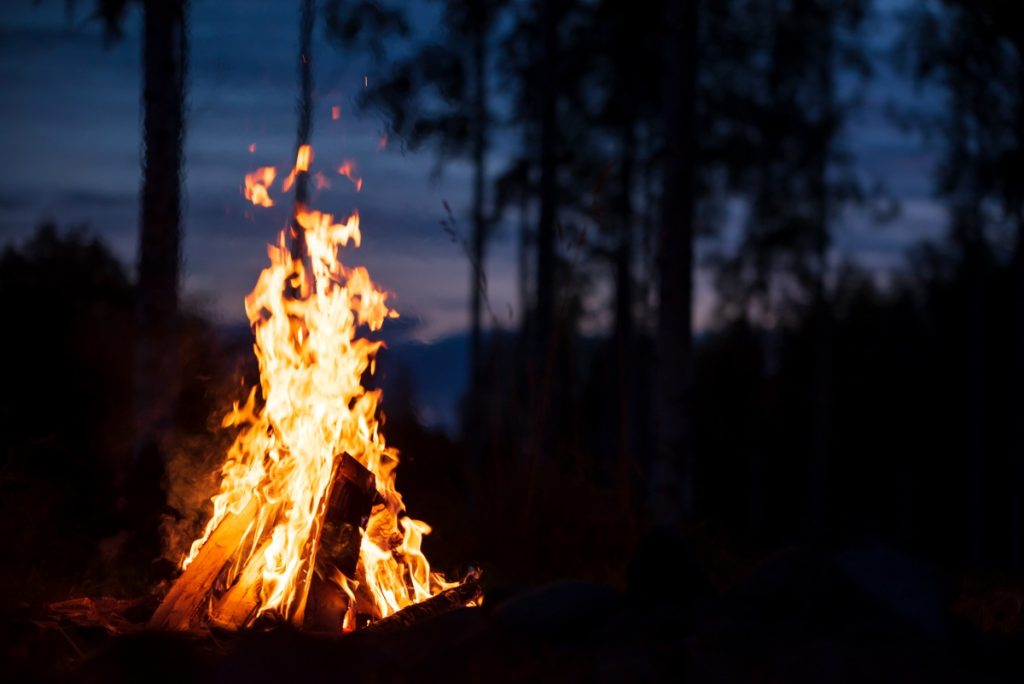Keeping yourself warm, socialising around it, and even toasting marshmallows, there’s plenty to love about building and lighting a campfire. But contrary to what many might believe, it’s not as simple as chucking anything on a burning pile and calling it a day. There’s an art to building a good campfire, and it starts with choosing the right wood.
So, to get yourselves ready for gathering around the warmth of the flames without worry of it being too smoky or burning out too quickly, we’ve put together this guide on the best wood for your next big campfire.
If I can’t use anything, what sort of wood should I use?
Whether you’re building a campfire or a home fire, you should always aim to use wood with a low moisture content. It should be between 15 and 20% for it to be considered optimal burning wood, with anything over 20% considered wet and below 15% overly dry. This is why bringing your own kiln-dried logs rather than foraging in nearby woods for firewood is a preferred solution, as they’re pre-dried and ready to go straight onto your fire.
Wet woods are much more difficult to light and, once they’re burning, release more smoke and ash than dried wood. One way to ensure that you’re getting the best standard of dry firewood for your campfires is to look for the Ready to Burn certification on what you’re buying. This is administered by the UK Government’s Department for Environment, Food and Rural Affairs (DEFRA), ensuring that you’re getting wood that’s within the moisture content requirements and will burn cleanly.
The species of woods to look for
Now you know about moisture content, which species of wood are the best for long-lasting fires that emit the heat you need to keep you warm? Softwoods make the perfect choice for your next big campfire, as while hardwoods are better for keeping the fire going, softwoods are much easier to light. They’ll give you a great flame pattern with lots of heat and perfect wood ash for following on with a BBQ once the flames have died down.
Alder is a fantastic choice for your campfire. Widely considered a softer hardwood, alder offers an easily lit fire with a steady flame while giving off a lot of heat. Ash, beech, and birch have similar slow-burning qualities that make them fantastic for building your fire.
When it comes to choosing softwoods to get a fire started, pine is your best choice. Not only does it ignite quickly due to its resinous nature, meaning it’s highly flammable, but it’s also in abundance in many woods around the world and has a distinct aroma to help identify it. But when you are burning softwoods, it’s important to exercise caution as they can produce more sparks than hardwoods if they aren’t properly dried. Plus, with how quick they are to burn, you need to keep a closer eye on them.
Building a fire for minimal smoke
Campfires and smoke go hand in hand, but it’s not always fun trying to enjoy the camping experience and choking on thick clouds of smoke. Plus, many areas of the UK now have air quality regulations and fire restrictions in place, meaning you could be in danger of getting fined for producing too much smoke from your campfire.
This is why, when considering what firewood to use to reduce the smoke created, choosing well-seasoned and dried wood with a low moisture content means that it will burn cleaner, more efficiently, and without any smoke once the fire is lit.
Additionally, proper fire construction can play a significant role in reducing smoke. Build a well-ventilated fire pit with adequate airflow to encourage complete combustion and minimise smouldering. Avoid overcrowding the fire pit with excessive wood, as this can restrict airflow and lead to increased smoke production.
Campfires aren’t just about keeping you and your fellow campers warm but are also an opportunity for bonding around its welcoming flame. By using this helpful guide, you can be sure that your campfires burn for longer so you can get the most out of your time around the embers.



